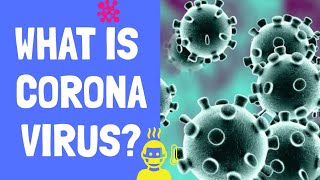Saturday, 20 December, 2025г.
















Где искать: по сайтам Запорожской области, статьи, видео ролики
пример: покупка автомобиля в Запорожье
What is a coronavirus? How do you get coronavirus?Does coronavirus cause death? #china #Coronavirus
Coronavirus
Coronaviruses (CoV) are a large family of viruses that cause illness ranging from the common cold to more severe diseases such as Middle East Respiratory Syndrome (MERS-CoV) and Severe Acute Respiratory Syndrome (SARS-CoV). A novel coronavirus (nCoV) is a new strain that has not been previously identified in humans.
Coronaviruses are zoonotic, meaning they are transmitted between animals and people. Detailed investigations found that SARS-CoV was transmitted from civet cats to humans and MERS-CoV from dromedary camels to humans. Several known coronaviruses are circulating in animals that have not yet infected humans.
Common signs of infection include respiratory symptoms, fever, cough, shortness of breath and breathing difficulties. In more severe cases, infection can cause pneumonia, severe acute respiratory syndrome, kidney failure and even death.
Standard recommendations to prevent infection spread include regular hand washing, covering mouth and nose when coughing and sneezing, thoroughly cooking meat and eggs. Avoid close contact with anyone showing symptoms of respiratory illness such as coughing and sneezing.
How do you get coronavirus??
A newly identified coronavirus has been spreading in China, and has now reached several other countries. As the number of confirmed cases and deaths continue to rise, health officials are working on all fronts to learn more about the virus and put measures into place to curtail its spread. Here's a look at what you need to know about the virus, now called 2019-nCoV.
Update on Saturday, Jan. 26: A third case of the new virus has been confirmed in the United States, this one in Orange County, California. There are an additional 323 confirmed cases of the new coronavirus infection and 13 additional deaths in Wuhan, where the virus originated, according to the Health Commission of Hubei Province. This news, along with the report of a virus-related death in Shanghai and another in the Henan Province, brings the total number of deaths linked to 2019-nCoV in China up to 56, The New York Times reported. As of Sunday (Jan. 26), the total number of confirmed case of the rise has reached 1,975, according to the Times. In addition to the cases reported in China, reports of the infection have been confirmed in Australia, France, the U.S. and seven countries in Asia. See below for up-to-date information on everything you need to know about the spreading coronavirus.
New coronavirus from China: Everything you need to know
oronaviruses are a large family of viruses that can cause respiratory illnesses such as the common cold, according to the Centers for Disease Control and Prevention (CDC). Most people get infected with coronaviruses at one point in their lives, but symptoms are typically mild to moderate. In some cases, the viruses can cause lower-respiratory tract illnesses such as pneumonia and bronchitis.
These viruses are common amongst animals worldwide, but only a handful of them are known to affect humans. Rarely, coronaviruses can evolve and spread from animals to humans. This is what happened with the coronaviruses known as the Middle East respiratory syndrome coronavirus (MERS-CoV) and the severe acute respiratory syndrome coronavirus (SARS-Cov), both of which are known to cause more severe symptoms.
Sometimes, but not often, a coronavirus can infect both animals and humans. Most coronaviruses spread the same way other cold-causing viruses do, through infected people coughing and sneezing, by touching an infected person's hands or face, or by touching things such as doorknobs that infected people have touched
Похожие видео
Мой аккаунт


 У вашего броузера проблема в совместимости с HTML5
У вашего броузера проблема в совместимости с HTML5

![Corona virus [ cause , symptoms and precaution ]](/images/mq/2/07/0VzVZyK4bCgUm4.jpg)
